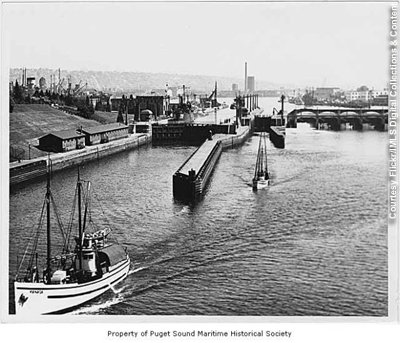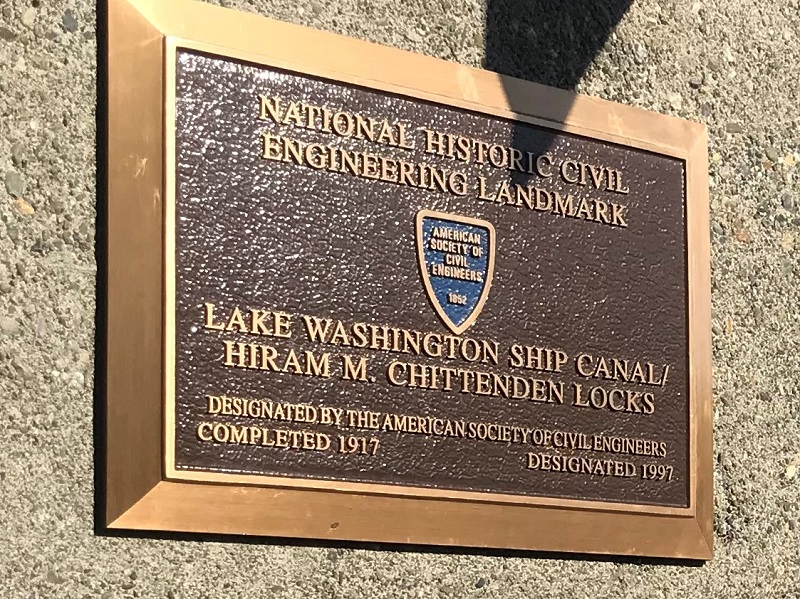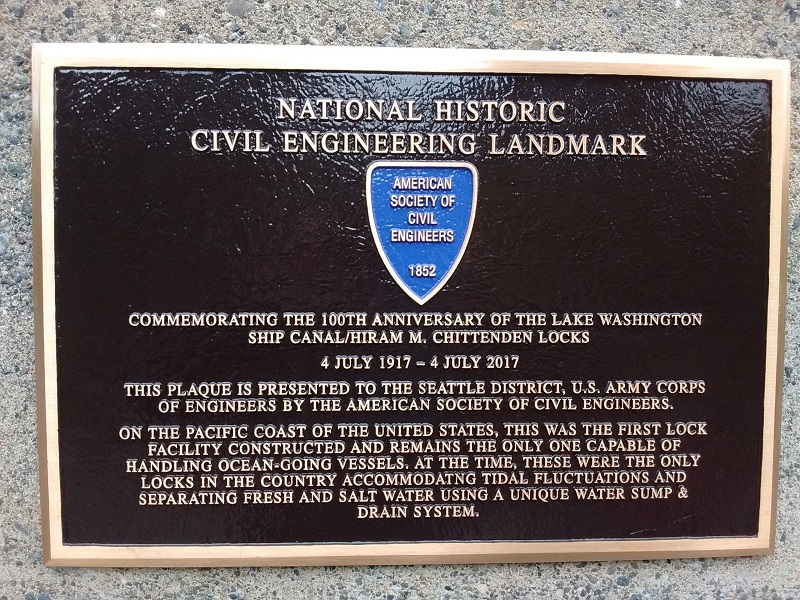Lake Washington Ship Canal & Hiram M. Chittenden Locks
47 39 55.68 N
122 23 49.56 W

The Hiram M. Chittenden Locks, the largest and most heavily used locks on the West Coast, incorporated unique, parallel dual-sized lock chambers for water conservation and preventive measures to reduce salt water intrusion into Lake Washington.
After more than 50 years of contention and debate, dredging began in 1911 on an eight-mile channel connecting Puget Sound, Seattle's gateway to the Pacific, to two inland freshwater lakes, Lake Washington and Lake Union. With the completion of the Lake Washington ship channel and Chittenden locks, coal and logs from the interior had a dedicated water route to the ocean, and the city's 4 1/2 miles of coastal harbor burgeoned into 100 miles of commercial, industrial and recreational piers and wharves.
The project transformed Seattle into a major metropolitan port city and advanced the practice of engineering on several fronts. The locks use an innovative drainage system to keep Pacific saltwater from damaging the inland freshwater ecology. They also incorporate one of the first fish ladders in the U.S. The project contributed significantly to the use of concrete in lock construction and to the development of cathodic protection systems to fight corrosion of steel members.
Facts
- The Chittenden locks are the busiest in the U.S., The large lock alone ferries up to 200 vessels at a time between Puget Sound and the city's inland harbor.
- Chittenden is the only lock system in the U.S. that separates salt and fresh water and that can accommodate tidal fluctuations. A sump upstream of the locks collects the heavier salt water, which pipes and gravity transport back into Puget Sound.
- Chief engineer General Hiram Chittenden drove the decision to use concrete over wood, the key to the locks' longevity. He also insisted on two locks instead of one to handle large and small vessels more economically. And by lowering the level of Lake Washington, his design eliminated regular flooding from adjacent rivers.
- Chittenden is equally renowned as a surveyor and author who pioneered the recording of Western history in books such as American Fur Trade of the Far West and Yellowstone National Park.
- Before the channel was built, coal from inland mines had to be transferred 11 times before reaching Seattle, and timber had to be hauled by wagon over rough, muddy roads to the coastal mills.
- Dredge material was used as fill to establish a botanical garden that today is one of the city's tourist attractions with 500 plant species from around the world.


Resource
- Dodds, Gordon B.; Hiram Martin Chittenden: His Public Career, University Press of Kentucky, 1973

